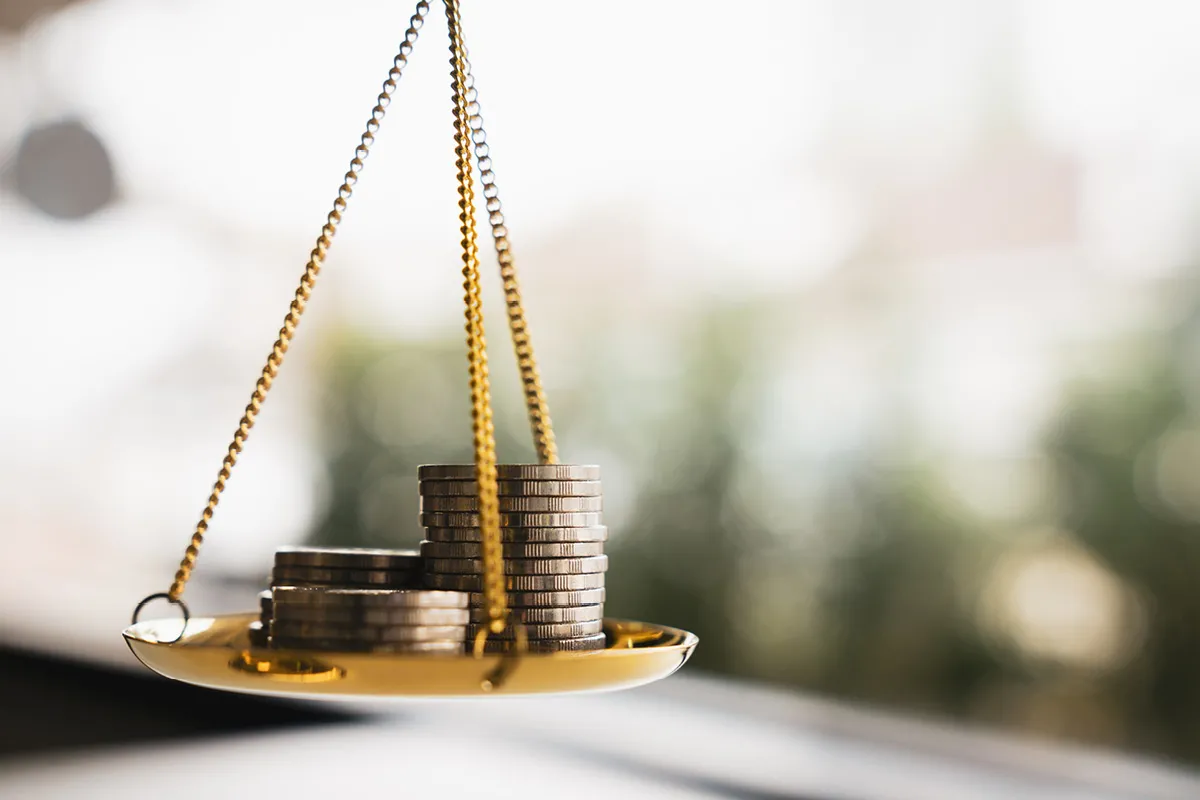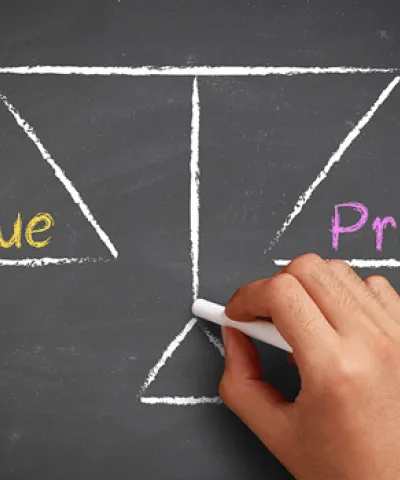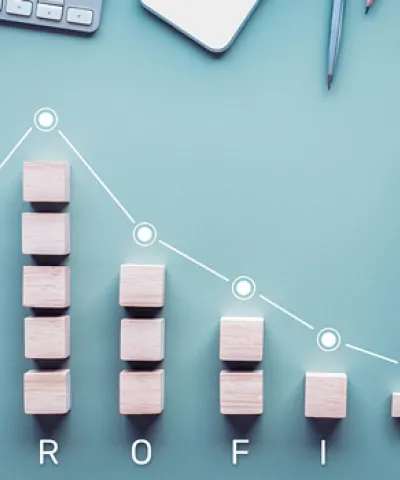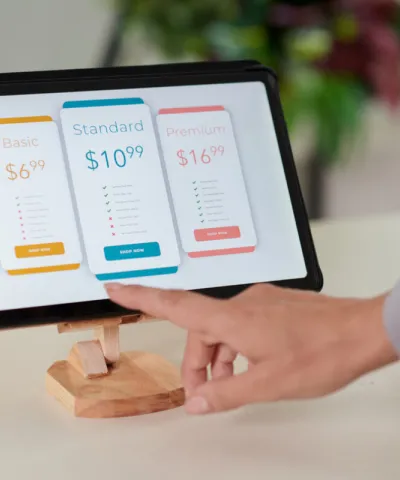Customers do not always behave 100% rationally when making purchase decisions. Many factors influence their ability to choose the right product or service. In fact, the way people actually make decisions is often a combination of rational and emotional.
Using behavioral affects can increase a company’s chances of selling more at better prices. In this article, we discuss anchoring bias and other behavioral pricing techniques.
What is behavioral pricing?
Prices are a significant aspect of a product. They are instantly noticeable and highly pertinent when consumers decide to buy. Behavioral influences underscore that consumers do not always think logically about price. This is the point where behavioral pricing becomes significant.
Companies can harness many advantages of behavioral pricing to make prices more attractive to customers. Which mechanisms to use often depend on your product and business.
What is price anchoring?
An example of behavioral pricing is price anchoring. The anchor effect refers to a starting point of reference which influences future decisions. For certain items, consumers have specific price expectations. However, for others, they require a reference point.
With price anchoring, you first present customers with one price. This then becomes an anchor which they use to judge later options. The strategy involves establishing a benchmark price that exceeds the ultimate price.
Price anchors influence willingness to pay. By making the price anchor high, you can make a separate final price seem small in comparison.
One pricing strategy that benefits from the anchor effect is tiered pricing. Here, customers are presented with the value of higher tiers in relation to the base tier, making them seem more attractive. Offering the customer good, better, best options enables customers to self-select the alternative that is best for them. This strategy avoids excessive design and significantly impacts the perceived cost-benefit ratio.
How can price anchoring increase sales?
Sales teams commonly use price anchoring as a strategic tool to influence customer behavior and perceptions. However, it's crucial for sales teams to implement price anchoring ethically and in a way that aligns with the overall value proposition of the product or service. Misuse or manipulation of anchoring techniques can erode trust and harm customer relationships in the long run.
If you use price anchoring effectively, it can create a perception of value for customers. It also helps them to make more informed decisions. The anchor provides a reference point for comparison, allowing your customers to evaluate different options and choose the one that aligns with their needs and budget.
Presenting a discounted price for a product from a higher anchor can also trigger positive emotions in your customers. This positive association may lead to a more favorable perception of your product and increase the likelihood of a purchase.
Anchoring can also be used to upsell or cross-sell additional features or premium versions of a product. When customers see a higher-priced anchor, they may be more inclined to opt for a slightly more expensive but improved version.
Price anchoring in B2B negotiations
In our sales excellence and price anchoring work with clients, we develop value selling playbooks for B2B sales teams. Here we include clever price anchoring tools to improve our sales and pricing outcomes.
When negotiating, we recommend starting with a high-priced alternative to ensure that buyers perceive your core product as having a higher value. This anchor will result in a higher counteroffer from the buyer. It’s also good practice to train sales staff on anchoring to ensure they have in-depth knowledge on the topic.
Price anchoring promotes discussions about how value connects to price. This allows you to find a middle ground. For instance: "We can propose a reduced price, but we'll also need to remove some benefits."
This may even encourage the buyer to upgrade their initial specifications and ask for better features. The other benefit is that it helps buyers defend internally why paying X amount for your product is a good idea.
An intriguing aspect of this strategy is that purchasing hubs consistently utilize price anchors to bargain for reduced prices from their vendors. The most frequently used price anchor by buying centers is: "We can get the same product from your rival at a 20% discount". In many cases this percentage is inflated to influence suppliers.
What are other behavioral pricing tactics?
There are many behavioral pricing effects that your company can use. Here are five of the most powerful ones:
1. The left-digit effect
Have you ever pondered why prices often end in 99 or 90? The "99" price tag is ubiquitous, from your supermarket chocolate bar to your monthly gym membership. So, what's the reason behind products having prices that end in 99 instead of being rounded up to the next whole number?
This is due to a phenomenon known as the left-digit effect, where consumers tend to round down to the nearest lower monetary unit. We notice the left digit first, which instinctively shapes our perception of the price before our rational thinking can intervene.
A smaller initial number at the beginning of a price (for instance, $3.99 versus $4.00) has a significant psychological effect, even though the price difference is negligible. Prices ending in 99 boost sales of inexpensive items, as the customer's attention is drawn to the lower digit on the left.
2. The compromise effect
Picture yourself in a grocery store, searching for a bottle of wine. You're presented with three options, none of which you recognize in terms of brand or quality. Which one do you pick?
It's rare for someone to stand in a grocery aisle and meticulously calculate the best price for an item. Shoppers often gravitate towards the middle-priced item, particularly when the decision seems trivial. They believe that the middle-of-the-road option is a safe bet.
The design of choices can significantly influence the pricing of a vast array of goods and services. Offering a suitable number of alternatives can gently push the customer towards a more valuable product selection, which is also beneficial for you as the vendor.
3. The endowment effect
Customers are more likely to pay for services or products they believe they already own (either in reality or perception) than for those they need to actively seek out. Possessing something, even in a symbolic sense, elicits emotional reactions in customers.
Techniques like trial periods and complimentary samples provide customers with a sense of product ownership prior to purchase. Consequently, when they do decide to buy, they behave in a manner to prevent loss, which enhances their readiness to pay.
4. The decoy effect
There are instances where it's beneficial to propose a product that you don't actually intend to sell, and that no one is interested in purchasing. This strategy is particularly useful for upselling bundles.
If one pricing option is clearly superior to another, it simplifies the decision-making process by providing a reference point. The creation of subpar dummy options as such reference points within your product range can subtly steer the customer towards the more valuable product or package.
5. The value effect
Picture yourself on a beach on a sweltering day, craving a beer. A friend offers to fetch you one from the only nearby vendor. This could either be a luxurious resort hotel or a shabby local grocery store. What would be your willingness to pay for the beer from each location?
You're probably inclined to spend less on beer purchased from a small store, and more on beer from a hotel. Consumers are ready to shell out more for a similar product if they deem it reasonable.
Transform your product into the equivalent of a luxury resort. This is a crucial task in creating value. Clear reminders like outlining uses and potential risks, or employing visuals and other cognitive aids assist customers in recognizing the potential value of the product for them.
When to use price anchoring and other behavioral affects?
Behavioral pricing aids in molding the price-value perception your customer has towards your product without reducing the price. An improved price-value perception considerably boosts your likelihood of closing the sale.
Employ these strategies when they assist you in persuading your clients to make a smart choice and purchase a quality product. This ought to be a product or service that your client genuinely requires and at a cost that mirrors your product's worth.
Behavioral strategies can greatly influence your gross revenue and eventually your net profit. However, bear in mind, this is only accurate if you apply them fairly. Knowing which tactics to apply and when is usually the most difficult task companies face. Companies should also test ideas before bringing them to market. Our experts at Simon-Kucher are here to help.
If used incorrectly, behavioral affects can backfire. For example, we advise against using these techniques to sell inferior products at inflated prices. Customers catch on quickly and you will risk losing them forever. Trust is the key driver in sales.
Want to learn more? Reach out to our experts.





